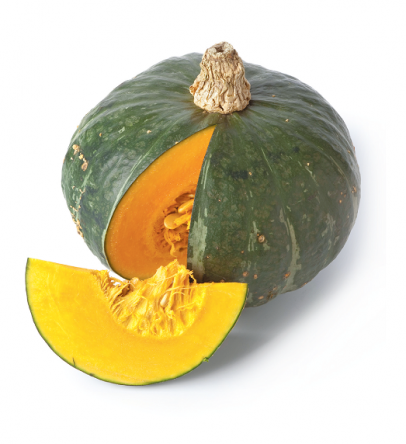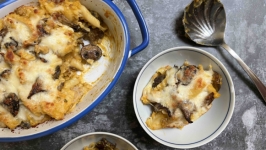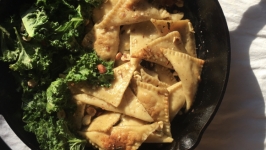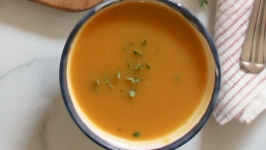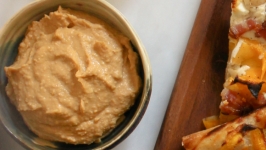Vegetable Matter: Winter Squash
What is a cousin of the cucumber, loves to be drizzled with maple syrup and can be baked, steamed, mashed, boiled or roasted? You’ve got it—it’s winter squash.
If you’ve been overwhelmed by the abundance of gourds at your market or farm stand, you’re not alone. There are so many varieties of winter squash that it’s hard to keep track of what’s what but they all share some similar characteristics. Every winter squash has a hard, thick shell, a hollow inner cavity and—if you can get through the tough exterior—delectable sweet flesh. Not only that, this antioxidant-packed vegetable is an anti-inflammatory, a good source of vitamin C and a delicious treat to boot.
Art Mello, of Mello’s Farm Stand in Portsmouth and Tiverton, grows more than 10 varieties of winter squash. Planting happens in the early summer, and harvest runs from September through October. His favorite? “I like the Blue Hubbard a lot. It’s got a very creamy texture and great flavor. It makes a great squash pie, with an almost custardy texture.”
Choosing the right gourd is the first step. Although you might be attracted to the shiny ones, a handy tip is to avoid glossy-rinded squash in favor of one with a dull rind. It should be heavy and firm; otherwise, the flesh is liable to be stringy and mushy, a combination that makes for a very lackluster mid-winter meal. Some popular varieties of winter squash are the Butternut, Acorn and Hubbard, although there are dozens more that offer similar flavors, textures and health benefits as their better-known counterparts.
Because of their sturdy shells, winter squash have a long storage life that makes them a perfect veggie for the winter months. Once cut, they will keep in the fridge for up to three days.
To cook a winter squash, wash the exterior and then slice it in half lengthwise, exposing the hollow inner cavity. After scooping out (and saving!) the seeds, you have many options. For steamed or roasted squash, peel and slice it into cubes before cooking. Another option is cook the squash with skin on, in the oven. Place the two halves cavity side up on a pan and put a small layer of water in the pan to prevent the squash from drying up. Drizzle with maple syrup and melted butter or olive oil, herbs (try sage or rosemary) and sea salt.
Squash can be prepared either savory or sweet, in soups, pastas and risotto or pies, custards and cakes. For a healthy snack, toast the seeds on a cookie sheet at 160° for 15–20 minutes. If overcooked, they will lose their healthy oils.
This versatile and delicious winter staple is easy to cook and even easier to enjoy. Art Mello loves the Hubbard, but he doesn’t discriminate: “They’re all delicious.”


